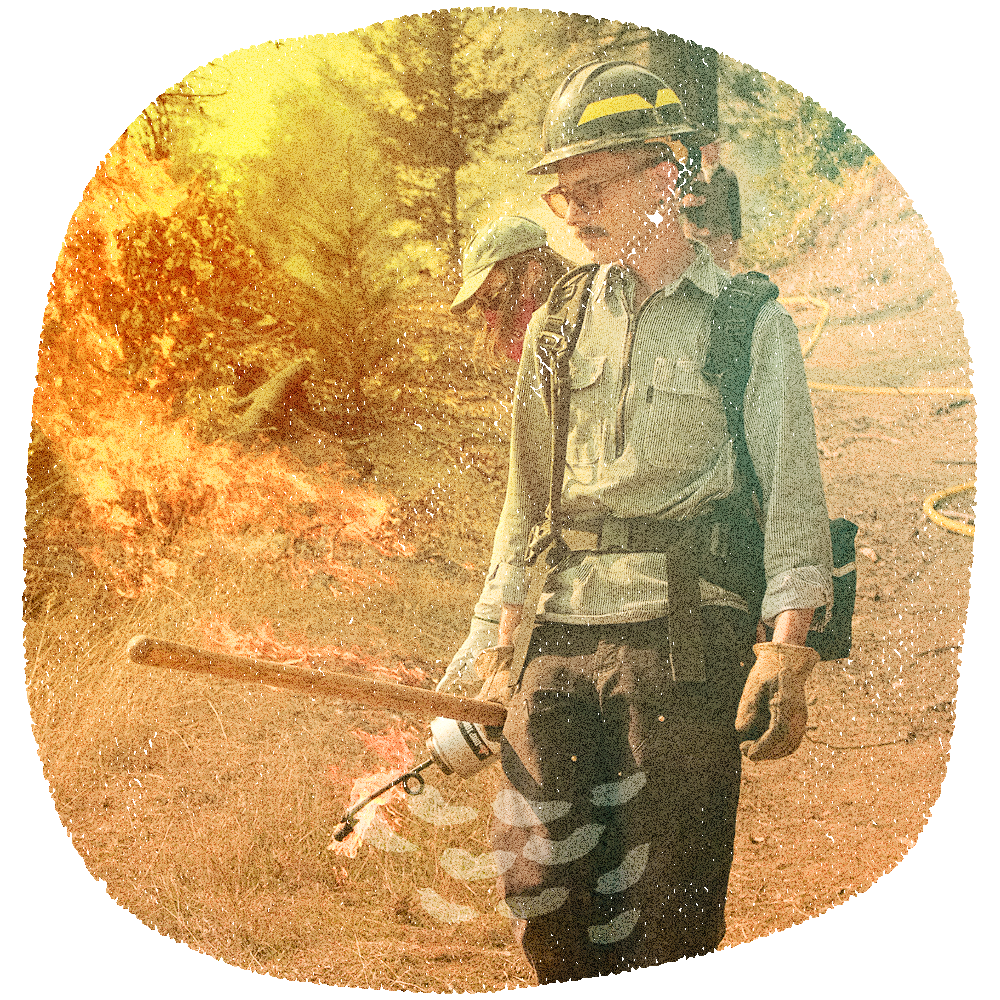
apophasis (n.) when one can only describe something by stating which characteristics it does not have (such as nonviolence) – especially because human thought or language remains insufficient to describe it fully or accurately (such as god)
Wolf Tone (n. or v.) the phenomenon when the frequency of a particular note matches the resonant frequency of the musical instrument attempting to produce it, thereby overwhelming the instrument and glitching the note into a state of impossibility – which manifests through a howling sound due to the two notes to either side of the fugitive note running into one another
Four days later and my foot plunges into the grey glacial melt of the Tootl’o Huno’ riverbed – about a half mile wide where I now pause to catch my breath. [1] I take out the map again, the lacework of topography folded over itself and tucked in some gladware plastic to stay dry from the rain-bodies – the very ones who have, over the last four days, retrieved the final remnants of warmth from my bones and sunken it into the wet tundra, which is really just a secretive name for the bog that has been drinking my feet in the recent days of travel. I examine the lines of the map like looking down upon myself, for surely I’ve finally arrived here at the spot-of-red which none other than indicates the location of the wolf den, or at least that’s what the Denali Park ranger told me (though in the hushed tone of forbiddance, as in “this area is off limits and I don’t know what you’re doing alone out there kid, but you don’t go there”). So yes, surely I’ve already crossed the line of what is permissible, and my senses re-administer themselves to the question of possible surveillance… though only the non-humans could know I’m here, so far down this break in the mountains.
Then like laughter I’m bent over a print in the riverbank – the land’s memory of a wolf’s body passing this way encoded in the fine cartilage of the gravel near the water’s edge. This is the first wolf track I’ve ever seen though I can only watch it long enough to determine the impending success of truly seeing them, and my own body is lurched swiftly forward into the complex of streams which make up the vast and braided meshwork of the river. I leap over the first limb of water and land in the thicker gravel on the other side, then the next and the next until I’m sent back to try a different route. My binoculars swing and bump back against my sternum, gesture me to lift them to my eyes till I can make out the vague contour of an island a half-mile out in the river-complex nearer the opposite bank. This must be where the wolf den is hiding. The river choreographs me into a process of leaping and returning – progress and falling-back – long enough for me to get crazy with my desire for the island, my strange desperation to see the wolf den and be revealed the vision of a wolf-child, or whatever unknown would emerge from the dark of their shelter.
After an hour of sporadic movement I finally arrive to the island, just as a sharpness begins to stitch its way along my scalp – there is nothing here beyond an elevated sandbank covered in river-grass. I circle the island several times, there’s no one else here. The uncompassionate truth of their absence is accompanied by the embarrassing recognition that even the idea of a wolf choosing the center of a river as their home is laden with fantasy. How far have I travelled over the last four days to get here? I’m suddenly exposed, the black of my shirt and pants bright against the granite-wash of the river valley, my shape the only vertical amidst miles of horizon. It’s clear I’m not meant to be here, and not just by the measure of the park ranger. This river runs cold and it’s the first day this week that the sun shines directly on the dying glacier up-river from the island, meaning that the volume of water coming down into canyon can suddenly increase within a short stretch of time as the last of the glacial ice melts. The sharpness in my scalp works its way down into my skull and my thoughts grow cloudy. I follow my tracks back to the nearest crossing, beginning the sullen return to the night’s camp in the foothills overlooking the river valley, but I’m stopped short by a word echoing in my head I had learned from a recent conversation with my friend Lee – avulsion: the rapid abandonment of a previous river channel and the formation of a new one. I notice how the set of my footsteps I’m now following disappear into the water differently than how I had leaped to arrive, for it had become a different crossing than when I had first come this way only twenty minutes earlier. The river has been swiftly shapeshifting all along, though I couldn’t realize it until I witnessed my own tracks’ submersion as a reference.
I move down the bank to where the finger thins and the crossing becomes possible again. With legs suddenly weakened, I begin a new path aimed towards the safety of the riverbank about a half mile away. However I find in this revision I’m required to retreat more often than progress, rhythmically surrendering to the transformation of this water-body who has now taken agency over me, who has retrieved me from the belief that I’ll be the one who crosses. Instead I grow cross-eyed looking so constantly at my feet and the moving water and the moment of leaping over one finger only to soon-after leap back across, having met a dead-end on the other side. My sovereignty is entirely laid open to the river, my assumption of a possible future laid open to the avulsion of a dying glacier.
As I continue my path in this way, I become entranced by the repetition of sound and movement – water rushing past, my boots squashing the wet gravel; their quickening as I run a head-start over the wider stretches of river, the pause of my limbs stretched out above the water, the silence, the un-timing, my breath, until the loud crunch of gravel on the other side, or sometimes the splash when I don’t quite make it all the way and my socks quench their thirst again. These instances of miscalculation expose my desperation to be back in the safety of the riverbank – I know the danger of getting soaked and chilled with the sun this near the horizon line, or of mis-stepping on a loose rock beneath the current. Further and further my route is guided up-river, not sure how long I’ve been here with the summer sun offering little motion to indicate the evening’s chronology.
Another leap and this time my boots make a new sound in their landing – I look up and the canyon wall looms above me, the river behind me. Suddenly and unreasonably, there in the sand at my feet is the same wolf track from before – the river has spit me out in the very spot I had first embarked from. I drop to my knees – this time I imagine the shape of the wolf before me, the smell of their fur, wet from their movement along the shoreline. I run my hand over their body, tracing their shape – the negative space that once filled the footprint before me. I bring my face down to their eye level and turn my head to face the direction they traveled, the valley opening up before us, the clouds heavy and ripe blowing in over the range to the north. I slide my palm down their forearm to hover just above the track itself, the sharpness of the claws cutting V-shapes in the sand, digging in deepest on the right side to describe how their weight leaned as they passed by, the heavy impression at the front of the track giving away their swift gait.
I’m reminded of a note that sometimes haunts the scale of the cello called a Wolf Tone, between the E and the F#. The easiest way to say why it exists in its own unique state, is that the frequency of that particular note is the same as the resonance of cello itself, so when they meet, the ripple is too big to be admitted, and the cello glitches and begins to howl, hence the name ‘wolf’. I however don’t believe that’s the only reason this unsoundable note is called wolf. I wonder if it’s also wolf because it evades persuasion, because it will not be seen or heard, or mastered. Predictably, luthiers and cellists have developed technologies of submission to tame the wolf.[2] Some will squeeze the cello between their legs, altering its resonant frequency – some will place a magnet on the soundboard or a metal ring around the string below the bridge to weight the vibration, forcing the wolf into a limp so it’s easier for the bow to grab the string, and catch them. But despite these attempts at mastery, the wolf continues to frustrate the idea of a perfect note, or of an intact scale – and even more subversively, requires that one cannot simply rid themself of the wolf without also dampening the resonance of every other note on the cello.
The perceived howl is in fact, the sound of their absence – it is the sound of the frequencies to either side of where the wolf tone would have been, running into one another, suddenly with no one in between to separate them but a ghost. In this sense, the wolf is apophatic, as in they can only be described by reference to what they are not. They can only be seen by their track, never their body, and so require a queerness to the way one knows to witness. As Catherine Keller puts it “…let us mark this listening as apophatic discipline. To listen: not yet to know.” I realize I’ve been searching for this note across the backcountry of the Alaskan interior alone for the last four days. Searching for the moment of catching their evasive shape in my archive of shapes – to finally hear the wolf tone. The spot-of-red on the map marking the haunted place between E and F# on the river’s scale length. It should be no surprise how in my desire, they lured me past my foolishness into the sonic river channel to their den that is not there. How they brought me into my own state of avulsion, into the dying body of a glacier.
And so I’m left there, kneeling and apostled before the theology of their footprint, with nothing to hold but vigil for this concave shape beneath their absence, for the way they remain fiercely and mercifully present, even in their fugitivity. I imagine the Wolf tone must love like god does. I imagine them down in the river valley, ephemeris. They’re making tracks in the sand beneath the stars. Splashing through a shallow creek bed; a startled flock of winter ptarmigan break from the willow thicket. They’re sniffing a plume of mountain sheep wool snagged on the bush. They lay at the edge of a clearing while the clouds pour over them.
I strain my ears, and only hear the water rushing.
[1] Kari, J. 1999. Draft Final Report: Native Place Names Mapping in Denali National Park and Preserve.
[2] Freiberg, S. “How to Tame Annoying Howling Wolf Tones”. Strings Magazine. (May, 2005).




